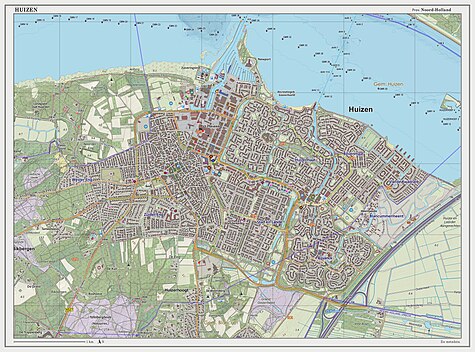|
Huizen
Huizen (pronounced [ˈɦœyzə(n)] ⓘ) is a municipality and a village in the province of North Holland, the Netherlands. The name "Huizen" is Dutch for "houses" and this usage has been linked to the belief that the first stone houses in the region, instead of the more common sod houses of the time, appeared here. Huizen is part of the metropolitan area of Amsterdam. HistoryHuizen was originally an agricultural village, near the Zuiderzee until 1932. During winter the farmers went fishing, which started the development from an agricultural to a coastal village with a thriving fishing industry, stimulated by building the harbour around 1850. After the damming of the Zuiderzee in 1932, the old sea became a lake, and economic activity shifted towards industry and commerce. In the 1960s the town was designated to build substantially large residential areas, to overcome the housing shortage in the region. From then on, the village took on an influx of people and grew rapidly. Where the Phohi-flat now stands in Huizen, before World War II was a large transmitter intended to contact the Dutch East Indies, some 12.000 km away. A post mill that stood in Huizen was dismantled in 1916. It was re-erected in 1919 at the Netherlands Open Air Museum, Arnhem, Gelderland. TopographyHuizen is part of the Gooi area, well as the home of the rich and famous. Local government The municipal council of Huizen consists of 27 seats, which at the 2022 municipal elections divided as follows:[5]
TransportWith its population of close to 42,000, Huizen is one of the larger Dutch towns without railway connection. On a national level, it's preceded by Drachten and Oosterhout. Notable people
Sport
Gallery
References
External links
|
||||||||||||||||||||||||||||||||||||||||||||||||||||









